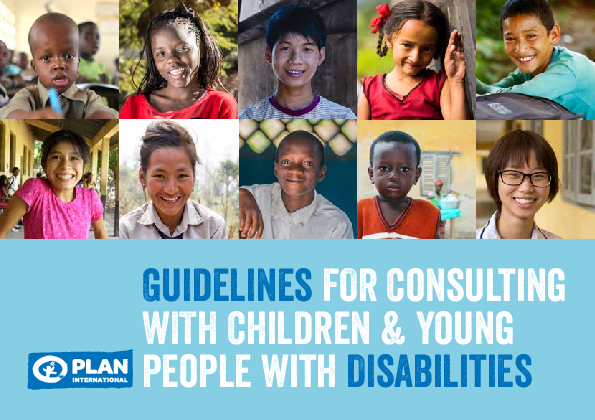
Guidelines for Consulting with Children & Young People with Disabilities
Publication year:
2016
English, French,Portuguese
Format:
(942.1 KiB)
Publisher:
Plan International
Children and young people with disabilities face many barriers to participation in society and are a particularly vulnerable group in the communities where Plan International works. Physical, attitudinal, policy and/or institutional barriers hinder the full and effective participation and protection of children with disabilities in society. For instance, children with disabilities are 5-10 times less likely to go to school, and are also more likely to experience poor health and violence. Furthermore, gender inequality potentially compounds exclusion, so that the impact of disability may be more pronounced for girls with disabilities.
More efforts are therefore needed to overcome the barriers that many children and young people with disabilities face so that they can participate on an equal basis with their non-disabled peers, as is their right. This can be achieved both by ensuring that programmes are inclusive of children and young people with disabilities, as well as by developing specific interventions for them. These efforts are particularly important for Plan International, given their commitment through child-centred community development standards towards tackling exclusion and improving participation, especially of the most vulnerable groups.
It is crucial to consult with children and young people with disabilities as they are the experts of their own situation. A programme’s effectiveness and inclusivity increases when children and young people with disabilities meaningfully contribute to all stages of programme planning.
Read full abstract
View & Download
Autodetected language
English
1 Documents
Other languages
Document information
Found a mistake? Help us improve!
If you have noticed a document assigned to the wrong author or any other inaccuracies, let us know! Your feedback helps us keep our data accurate and useful for everyone.
Share
Link
